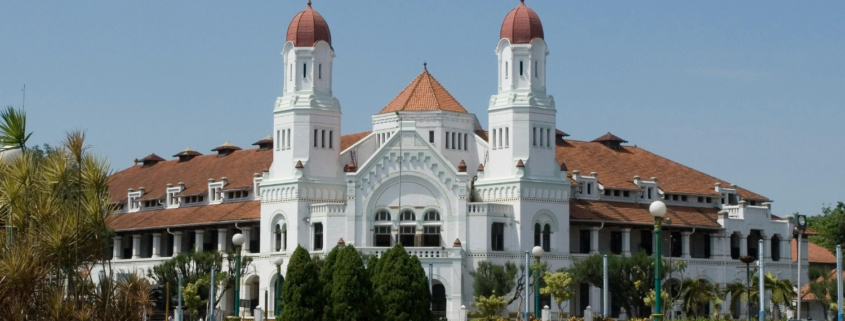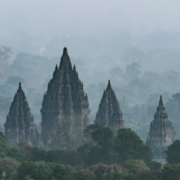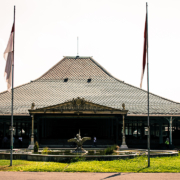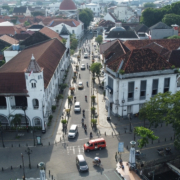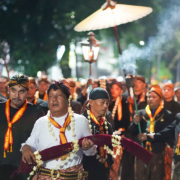Lawang Sewu: The Thousand-Door Legacy of Semarang’s Colonial Soul
Among Semarang’s most iconic and mysterious landmarks stands Lawang Sewu—an imposing Dutch colonial building whose name means “A Thousand Doors” in Javanese. With its arched windows, echoing corridors, and neo-classical charm, Lawang Sewu is both a masterpiece of colonial architecture and a site wrapped in legend and shadow. Once the nerve center of the Dutch East Indies Railway Company, and later a silent witness to wartime violence and spiritual unrest, Lawang Sewu now endures as a museum, a cultural symbol, and one of Indonesia’s most fascinating historical buildings.
Historical Background
Lawang Sewu was constructed in 1904 and completed in 1907 by the Dutch as the headquarters of the Nederlandsch-Indische Spoorweg Maatschappij (NIS)—the first private railway company in the Dutch East Indies. Designed by Dutch architects C. Citroen and J. Gerber, the building reflected the European architectural aesthetics of the time, while adapting to the tropical climate of Java.
During World War II, the building was taken over by Japanese forces, who used it as a military headquarters and reportedly as a detention and torture center. After independence, it changed hands again, serving administrative roles, but it slowly fell into disuse and became infamous for its eerie atmosphere and ghost stories.
After major restoration in the early 2000s, Lawang Sewu reopened as a museum and heritage site, drawing tourists, architects, historians, and paranormal enthusiasts alike.
Architectural Features
Lawang Sewu’s grandeur lies in its symmetrical layout, colonial elegance, and sheer scale. Though the name translates to “a thousand doors,” the building doesn’t literally have a thousand doors—but its countless arched doorways and tall louvered windows create the illusion of infinite entrances and exits.
Notable architectural elements include:
- Two main buildings (A and B) forming the central courtyard, with intricate stained glass, marble staircases, and a signature tower.
- High ceilings and wide hallways designed for ventilation and light.
- European Art Nouveau influences, seen in its ornamentation, railings, and glasswork.
- A central tower originally used to observe incoming trains and offer a panoramic view of Semarang.
- Underground tunnels and basements, formerly used as wartime prisons and rumored to be haunted.
Every detail of the building reflects an intersection of function and beauty, built with local materials but European vision, blending practicality with imposing dignity.
Symbolism and Cultural Relevance
- A Monument to Progress: Lawang Sewu symbolized modernity and technological advancement, representing the rise of the railway and colonial infrastructure in early 20th-century Java.
- A Witness to Struggle: The site became historically significant during the Battle of Semarang (October 1945), when Indonesian youth resisted Japanese occupation forces within and around the building. A memorial on-site honors those who died during this pivotal fight for independence.
- Mystical Reputation: Over time, Lawang Sewu acquired a reputation as one of the most haunted places in Indonesia. Tales of apparitions, whispering voices, and spiritual entities circulate widely, especially around the underground prison cells in Building B.
While some are drawn by its haunted fame, others come seeking its architectural legacy, colonial past, or deeper spiritual echoes.
Museum and Exhibits
Today, Lawang Sewu serves as a museum operated by PT Kereta Api Indonesia (the national railway company). Key exhibits include:
- Historical photos of Semarang and Indonesia’s railway system
- Old train signals, communication equipment, and uniforms
- Models of steam locomotives and early railway tools
- Restored rooms and halls, including the beautiful stained-glass meeting room, now used for cultural events
Visitors can tour the upper floors, explore the underground tunnels (with a guide), and gain a vivid sense of the building’s layered history.
Visitor Information
- Location: Tugu Muda Roundabout, Central Semarang, Central Java
- Opening Hours: 7:00 AM – 9:00 PM daily
- Entrance Fee: Modest fee (additional fee for underground tunnel tour)
- Tips:
- Visit in the late afternoon to enjoy golden hour photography; stay after sunset for the mystical ambiance.
- If sensitive to spiritual energy, avoid the basement without spiritual preparation.
- Guided tours available in Bahasa Indonesia and sometimes English—highly recommended for full context.
Lawang Sewu is more than a colonial relic—it is a mirror of Java’s complex past: innovation and occupation, elegance and oppression, silence and memory. With its timeless arches and whispering halls, it invites visitors to see not just a building, but a living archive of Indonesia’s struggle, identity, and spirit.
To walk its corridors is to step into a layered reality—where every door leads to another story, and where history still breathes behind the glass and stone. Whether you come for the ghosts, the history, or the architecture, Lawang Sewu will leave you with a sense of awe, reverence, and quiet reflection.

